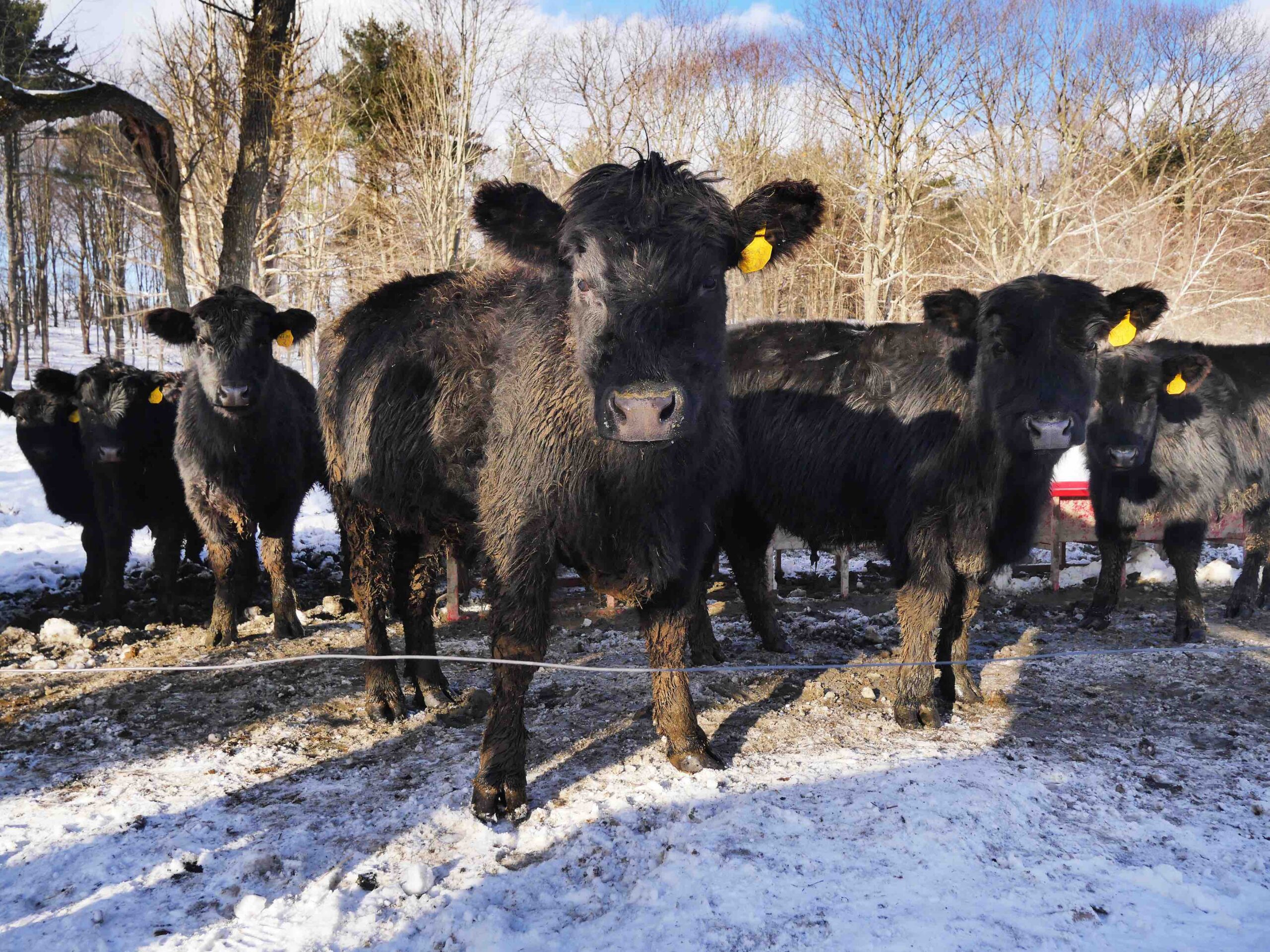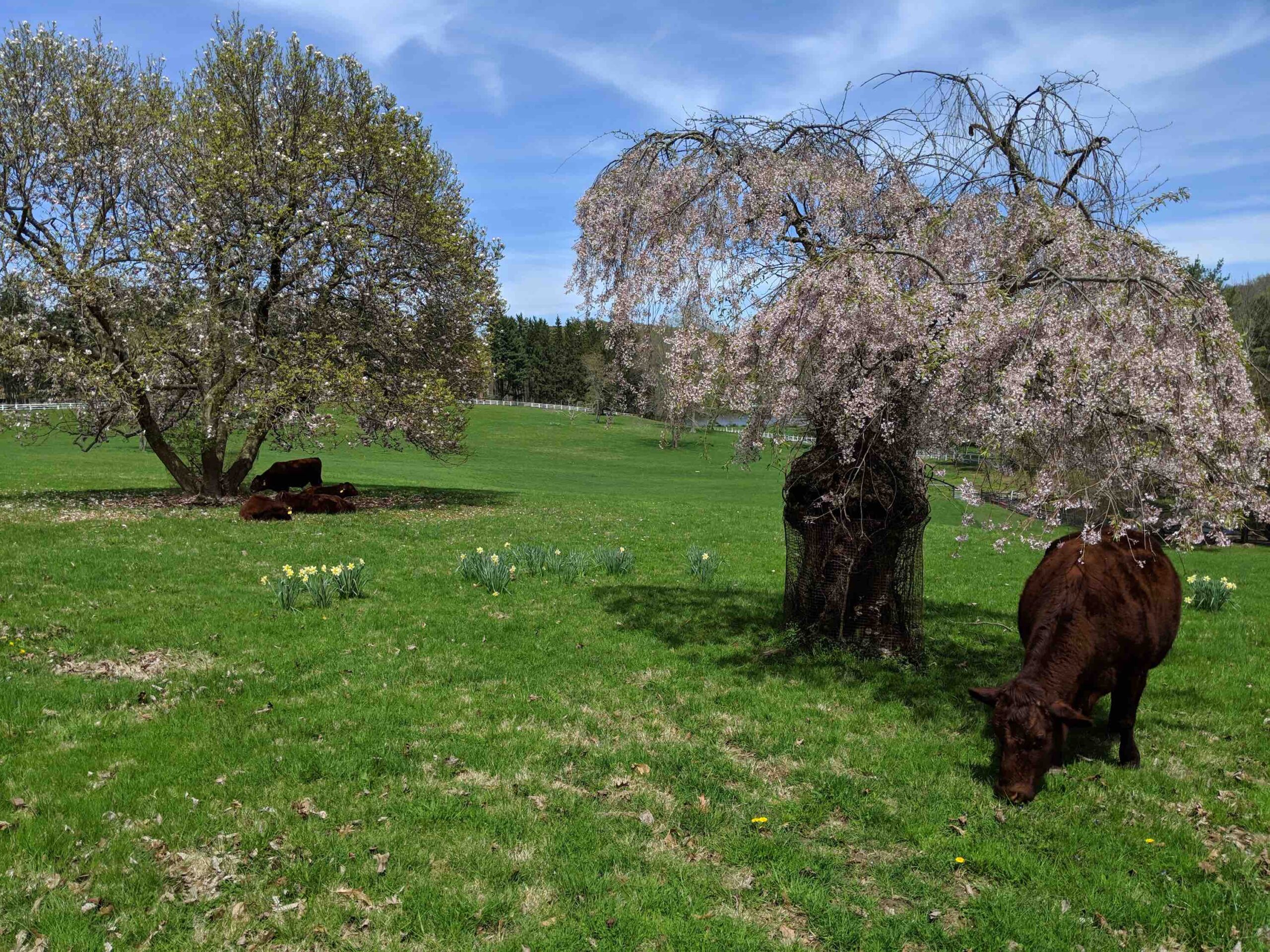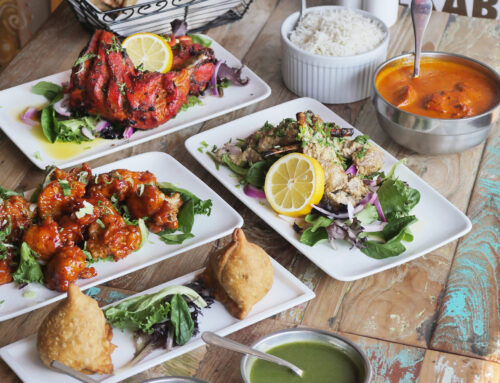Food is life. It sustains our health and our wellbeing. Food is made from the life that thrives around us – the plants that grow to be served on our plates, the animals that are raised to become a meal and the farmers that are responsible for creating these possibilities.
But, as the saying goes, we are what we eat, and a healthy animal begins with what they consume on the farm. But how do you know if the meat you’re eating is good for you?
Food for thought
All animals, including ourselves of course, need multiple meals a day full of nutrient-rich, fulfilling foods.
“It’s just like if you’re feeding yourself, it has to be clean,” says John Ubaldo, owner of John Boy’s Farm in Cambridge, NY and The Outpost, a farmer’s market in Bedford.
That means feeding animals a simple, clean and substantial diet of locally-sourced grains, free of hormones and antibiotics. And avoiding genetically modified organisms (GMO), which according to the FDA, are actually in the commercial meat industry: more than 95 percent of animals used for meat and dairy in the U.S. eat GMO crops.
“It’s something we’re passionate about and want to see,” says Lauren Silva, owner of Hemlock Hill Farm in Cortlandt. “So we’re putting more pressure on our feed company to offer straight off the line GMO-free feed.”
Ubaldo, who makes his own feed from his farm’s grains, is also against the use of genetically modified foods. He says these foods can be designed with certain chemicals that make them resistant to insect and weed-killing pesticides.
“The genetic modification technology itself is really amazing,” he says. “But putting it into corn, for example, means that when you spray the corn crop with Roundup, the corn is okay, but everything around it dies – that’s a little bizarre. If you’re eating corn on the cob that’s genetically modified, you’re directly ingesting that genetic material – and then those chemicals are ending up in the human body, too.”
Ubaldo’s distrust of GMOs began while he was working at a Wall Street firm specializing in biotech companies. It was a singular client meeting that changed his life.
“My boss set up a meeting with the lab assistant to the guy who invented the technology that was sold off to Monsanto [an agrochemical and biotech company],” Ubaldo remembers. “We talked for like two minutes, then the guy looked me in the eyes and said, ‘Son, this was never supposed to hit the food chain.’ So now, for 27 years, I’ve had this bug in my head. But instead of trying to fight the system, I’m building my own system.”
Ulbado says he knows many farmers with similar values who are doing the same.

Photo courtesy of Hemlock Hill Farm.
Breeding for quality, not quantity
Raising healthy animals is also about avoiding genetic alterations or modifications to the animals themselves.
While genetically modified animals are rare in supermarkets (although, genetically engineered salmon are currently on the market and genetically engineered pork has been approved by the FDA), selectively bred animals make up the majority of what we eat, especially for chickens.
The USDA states that broiler chickens, which have been bred specifically for consumption, “provide virtually all of U.S. chicken meat,” averaging “68 percent of all poultry sales,” as of 2021. These birds were bred to put on weight faster than their bodies can handle, often leading to health problems, including bone diseases and deformities, according to a 2021 study published by the National Center for Biotechnology Information.
But our local farms raise slow-growing breeds. Hemlock Hill raises Plymouth Rock and Red Heritage breed chickens, John Boy’s grows Berkshire pigs and Cabbage Hill Farm in Mount Kisco raises historic, once near-extinct livestock species like Red Devon cattle, Highland cows and Shetland sheep, ducks and geese.
“The Perdue commercial breed is ready in four to five weeks,” Silva explains. “Mine are ready in 10, which is nice because that’s naturally how a chicken should grow – it hasn’t been bred to grow faster.”
Additionally, creating and breeding GMO livestock limits species diversity, which can have detrimental effects.
“If you commercialize everything and are breeding for very selective traits, you’re going to lose a lot of genetic diversity, and they’re not going to be resilient to diseases,” explains Brian Mansour, Cabbage Hill Farm’s general manager.
Making a home on the range
Animals don’t always need to be housed in a barn or sheltered from the weather – usually, the best home for them is the great outdoors.
“I don’t believe in raising animals in barns; it goes against all the rules,” says Ubaldo. “There’s a reason why cows have four inches of fur on their backs and pigs have layers of fat. Outside is where they’re the happiest. So why would you want to change that?”
Yet, nearly all of our nation’s farms operate differently. In 2021, the U.S. Environmental Protection Agency found there were 21,237 Concentrated Animal Feeding Operations (CAFO) in the U.S.
In CAFOs, animals live shoulder to shoulder, feather to feather, rarely seeing the outdoors. Not only is this excruciatingly uncomfortable for the animals, but it creates a breeding ground for diseases.
As explained in a 2020 study published in The Official Journal of the European Association of Environmental and Resource Economists, “the high animal density in intensive farms leads to a greater spread of pathogens within the facilities.”
However, not all hope is lost. In a 2021 report by The Humane League, cage-free egg production in the U.S. has increased by 26 percent since between December 2007 and February 2021. Additionally, the Humane Society found that as of 2022, 14 states have banned or restricted the uses of cages for pigs, veal calves, and egg-laying hens.
While this doesn’t necessarily mean these animals have free access to the outdoors, it’s progress.
And, of course, we still have our local farmers. Silva says the animals at Hemlock Hill “live in a very free environment where they have access to the woods.”
While granting animals the freedom to roam is crucial to raising livestock in a healthy, stress-free environment, varying this environment is important as well.
Many ethical animal farmers are now including silvopastures (the practice of integrating trees and grazing livestock) as part of their livestocks’ field space. Silvopastures offer animals a larger variety of options and a more balanced diet.
“They don’t just need pasture,” adds Ubaldo. “They like to chew trees, eat leaves, all kinds of stuff.”

The cows at John Boy’s Farm. Farm favorite “Red” is front and center.
Caring for the Land
“The focus is not just on the animals, but on the land itself,” says Mansour. “If you take care of the land, the land’s going to take care of the animals.”
Enter rotational grazing, which preserves the health of the livestock and their pastures. Rather than walking the same spaces and eating the same grass, rotational grazing uses multiple pastures where animals move from one field to another, so areas can grow and replenish.
“We rotate like crazy,” says Ubaldo.
Cabbage Hill and Hemlock Hill do the same. At Cabbage Hill, cows eat at the upper part of the land, sheep eat the lower, and they’re moved to fresh pastures one after the other.
Meanwhile, at Hemlock Hill, the chickens, ducks and geese roam the fields after the cows are done grazing.
According to a USDA, “rotational grazing has the potential to improve soil health, forage productivity and even drought resilience of pasture-based livestock systems.”
Yet despite these benefits, the USDA reported that as of 2022, only 40 percent of cattle operations use rotational grazing, which may be due to the land limitations.

Photo courtesy of Cabbage Hill Farm.
Reading between the lines
Even when large agricultural companies pledge ethical farming and sustainability, it’s not always the reality.
A 2021 survey by the World Benchmarking Alliance found that only six percent of companies claiming to use regenerative approaches to farming – focusing on elements such as soil health, biodiversity and water conservation – have provided evidence of these commitments.
But that’s where our local farms come into play. The smaller-scale model allows farmers to have more control over how their land is used and animals are treated, and they can directly share these practices with their customers.
“A big reason why people come [to us] is because we have that level of transparency,” Silva explains.
“We can give more attention to each individual animal as it’s needed, so the overall quality of life is significantly better on small farms,” says Mansour. “If an animal’s going to be giving its life for you to use as a product, you want to make sure that animal is being cared for the right way, all the way up to the last point of its life.”
In other words, consumers play a vital role in ethical animal farming by choosing where they purchase their meat. Would you rather eat meat that came from an animal who lived in discomfort and confinement, living off chemicals and GMOs, or from an animal who was raised in a stress-free environment, eating well and truly taken care of by its farmers?
The choice is yours.
This article was published in the March/April 2023 print edition of Katonah Connect.

Kaitlyn Hardy
Kaitlyn Hardy is studying journalism and film at Emerson College. In addition to being a writer, Kaitlyn is also an avid reader, tea drinker, and movie watcher.










